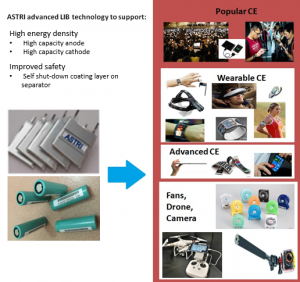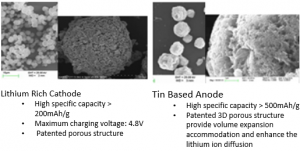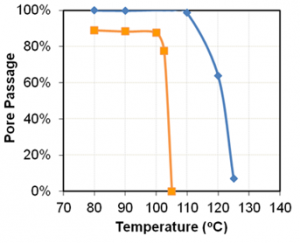Advanced Lithium Ion Battery (LIB) Technology
To cope with the power demand of new power consuming electronics, breakthroughs must be made in the development of lithium-ion battery (LIB) technology, including enhancing battery capacity and safety and reducing its size and weight. These requirements create the need for new materials research and development.
High Capacity Active Materials
ASTRI focuses its efforts on developing the next generation tin based anode material and lithium rich cathode material for lithium-ion batteries, which are expected to be impactful components for increasing the energy density of future LIBs. Their advantages of high energy density characteristics, competitive material cost and low environmental impact are important for commercial applications.
Features
- Lithium rich Ni-Mn cathode active material
- Sn-based anode active material
- Compatible with battery specification requirements
- Energy density increases while active material cost goes down
Applications
- Popular electronics
- Wearable electronics
- Advanced electronics
- Mobile fan, Drone, Camera


Self-shutdown Layer in the LIB
The safety of LIB is a big concern of the general public. With increasingly applications of LIB, the safety of LIB draws much more attentions than before. ASTRI focuses on developing a self-shutdown layer in the LIB to interrupt the cell reaction through the pores close-up when adverse temperature is sensed in the battery. In other words, the chain reactions in the battery can be inhibited and the dangerous flaming and explosion can be avoided.
Features
- Support great adhesion between separator and electrodes
- Self-shutdown layer to control overheating in the cells
Applications
- Light electric-drive vehicles
- Unmanned aerial vehicles/Robot
- Household appliances
- Phone, computer, other consumer electronics


